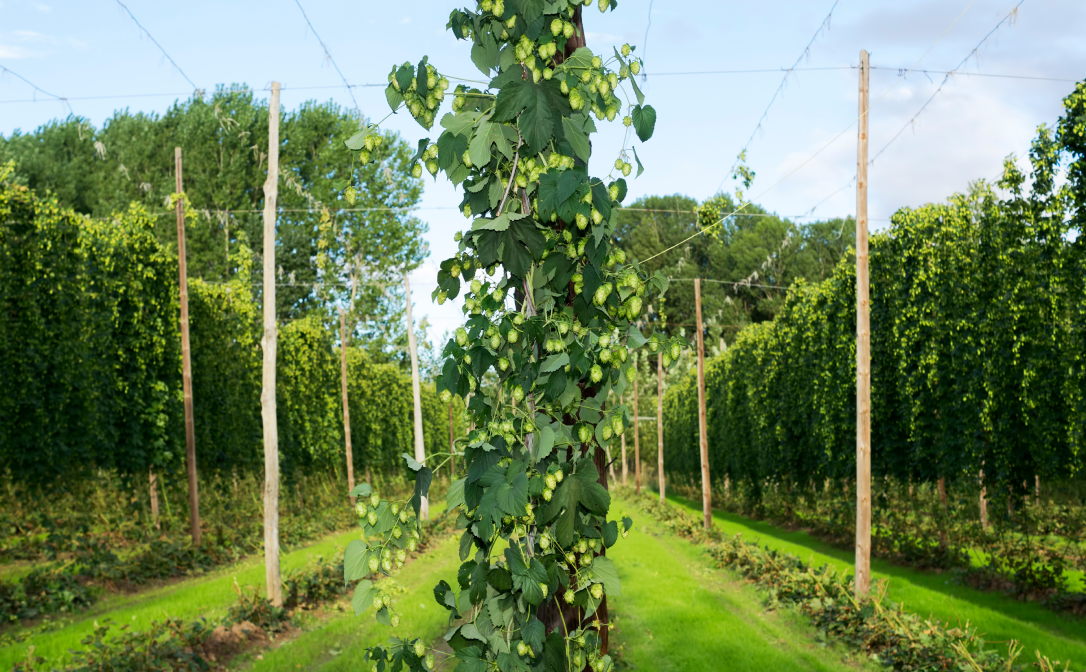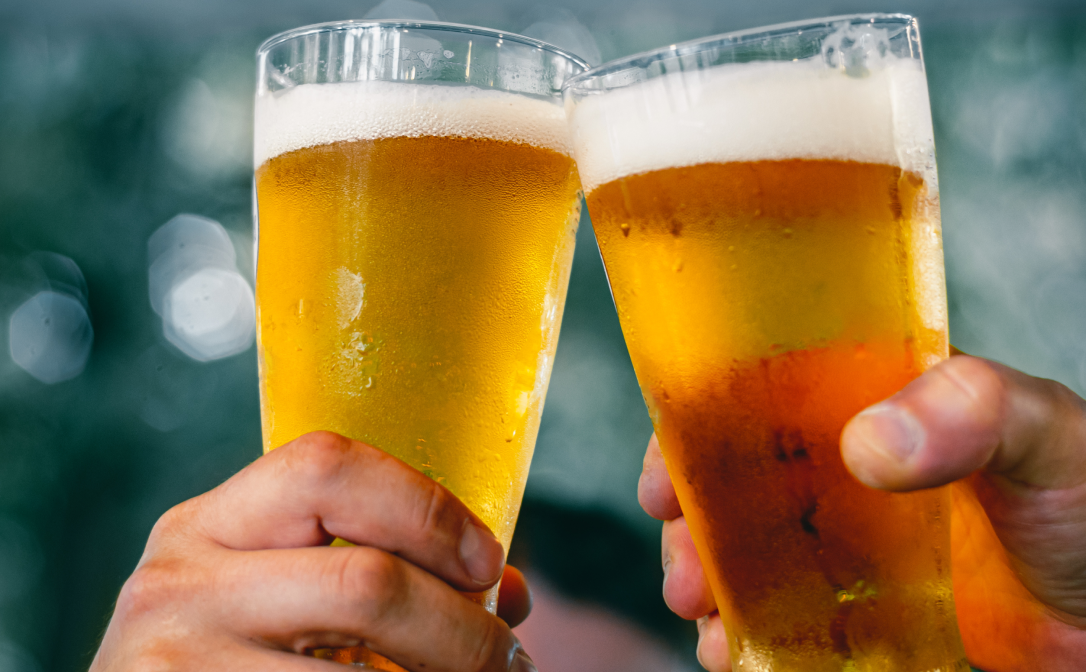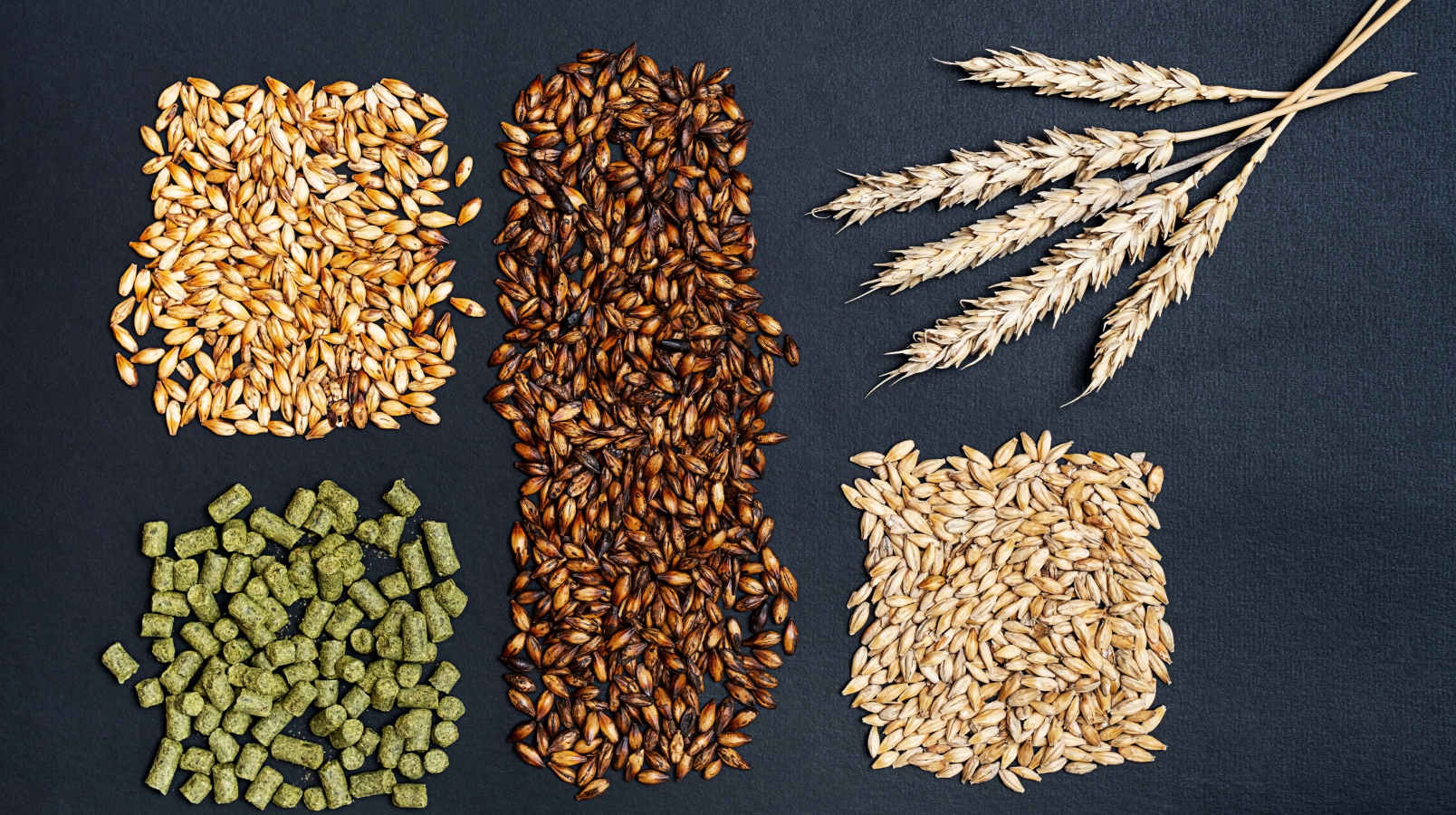Since we launched our beer courses, we have introduced our readers to the beer category, and the plethora of beer styles. Next up in our beer series, our resident expert Natalya Watson is answering some frequently asked questions about beer - from why exactly beer is bitter to what makes some beer dark.
What is beer?
Beer is a diverse category. There are many different styles of beer, from clear, gold pilsners to opaque, black stouts. But all beers share the following common features: they are fermented alcoholic beverages typically made using malt (malted grains), water and yeast, and flavoured with hops.
- Malt, short for malted grains, ultimately provides a brewer with the sugar that the yeast turns into alcohol. It also provides most of a beer’s colour and can give beer a range of aromas.
- Water is the main ingredient in beer, volume-wise. It provides the liquid environment in which yeast can consume sugars and turn them into alcohol.
- Yeast is a tiny microorganism that, through the process of fermentation, creates the alcohol and carbonation found in beer and can also give a beer some of its aromas.
- Lastly, hops, or more precisely hop cones, bring bitterness and aromas to beer.
What exactly is a craft beer?
Craft beer is a movement that was born in reaction to a lack of beer diversity in the North American market and was meant to drive a return to a more artisanal approach to making beer. Craft breweries used to be called microbreweries because early craft breweries were very small in comparison to large-scale commercial breweries. These days, there is a lot of debate as to what constitutes a ‘craft’ beer.
Why is beer bitter?
Hops, or more precisely hop cones, are responsible for bringing a bitter taste to beer. They also introduce a range of aromas, too.
Hops are climbing plants that produce hop cones, which are harvested annually in autumn. There are hundreds of varieties of hop, each with their own characteristics in terms of aromas, aroma intensity and levels of bitterness.
In order to extract their bitterness and aroma, hops are added during the boil step of the brewing process and the timing of their addition determines what kind of contribution they make:
- If hops are being used primarily for their bitterness, then they are added towards the beginning of the boil, as they need heat and time for their bitterness to be extracted.
- On the other hand, hops used primarily for their aroma are added near the end of the boil, because aromas can easily escape into the air if the hops are boiled for too long.
To vary the level of bitterness in a beer, a brewer can adjust the quantity of hops added, the timing of their additions, and the hop varietal they’re using.
Not a fan of beer’s bitterness? There’s still a beer out there for you! Certain hop-driven styles, like IPA, are defined by their high levels of hop bitterness and aroma, but other beer styles have lower levels of bitterness and let aromas from other ingredients, like malt or yeast, take the lead. Get to know a range of beer styles here.
Lastly, it’s worth mentioning that roasted malts can also contribute some bitterness to beer. More on malt in question 6 below.

What makes beer alcoholic?
The yeast that brewers use is a microorganism that has the ability to create alcohol when it consumes sugar.
In order to make alcohol, we begin with a sugary liquid and add yeast. The yeast then consumes the sugar and turns it into alcohol. At the same time, the yeast also produces the gas carbon dioxide (CO2) and aromas. This process is known as alcoholic fermentation, or fermentation for short.
In alcoholic drinks, the level of alcohol is often measured as alcohol by volume (or abv); for example, 5% abv means that five per cent of the liquid is alcohol. Beer styles can range in alcohol level, with low strength considered less than 4% abv and very high strength above 9% abv.
Why is beer fizzy/ carbonated?
Fermentation not only results in the creation of alcohol and aromas. Yeast also produces carbon dioxide (CO2) gas which dissolves into the liquid, giving beer its bubbles.
These bubbles rise up in the glass and contribute to the foam that forms on top of a beer as it’s poured. Carbonation also gives beer a tingly or prickly sensation on the palate and can balance sweetness and body to make beers more balanced and drinkable.

What makes beer dark?
Of beer’s four main ingredients, it’s the malt that gives beer most of its colour.
Malt, shorthand for malted grains, is simply any grain that has gone through the malting process. The malting process enables the malt to act as a source of sugar for the yeast. It also gives malt – and therefore beer – much of its colour and a range of aromas and flavours, too.
Different colours and flavours can be created by varying the temperature used and the length of time the grains are heated during the final step of the malting process, called kilning.
- Base malts are heated to the lowest temperatures in the kiln. If used on their own, base malts give a beer a straw or gold colour.
- Specialty malts are produced by increasing the temperature or length of time the malt spends in the kiln (compared to base malts) or by roasting malt at even higher temperatures. They are most often used in small amounts, in combination with base malts, and can give beer an amber, copper, brown or even black colour.
So dark beers, like porters and stouts, get their brown or black colour from the use of specialty malts.
What is the meaning of IPA?
IPA stands for India pale ale, which is a style of beer. The term India pale ale was first used in England in the 19th century as a name for a highly hopped pale ale that was shipped to India. Although a modern form of English-style IPA still exists, most beers labelled IPA today are variations on an interpretation that emerged in the USA as a distinct style in the 1970s. Also known as American IPA, this version is typically brewed with American hop varieties that gave the beer its pronounced fruity or resinous hop aroma and high bitterness.
Want to learn more about – and how to taste – a broad range of beer styles? Join us for the WSET Level 1 Award in Beer.


